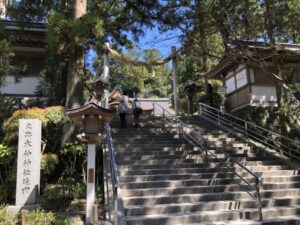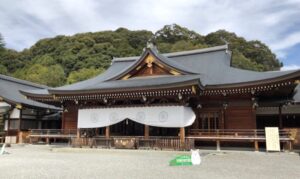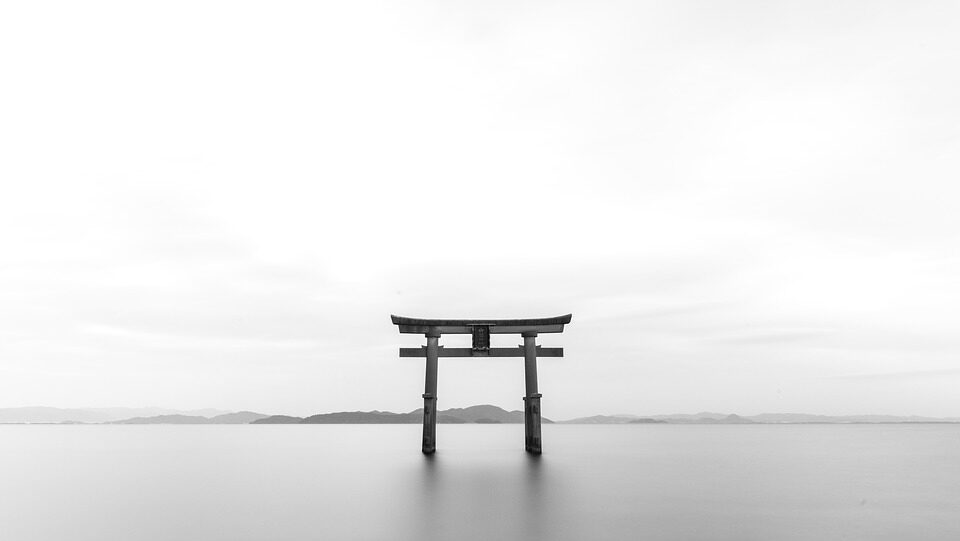【What is a “Jinja(神社)”?】 The Origin of Shinto shrines
This time I would like to write about Shinto shrines “Jinja(神社)”.
“Jinja” are an inseparable part of Japanese culture.
What is a “Jinja” anyway?
How did “Jinja” start?
I think it’s surprisingly difficult to answer such questions.
So, in this article, we will discuss
“What is a Jinja?”
“What are the origins of Jinja?”

目次
What is a “Jinja”?
First, let’s talk about what a Jinja is.
Jinja is Japanese shrine.
What is it?” is the ultimate big question, but perhaps the answer is “a place to enshrine Japanese God”.
From a place to enshrine, a shrine is usually built and regarded as “a house where God lives”.
Shinto shrines enshrine a “sacred object(ご神体)”.
Every shrine enshrines something to replase God.
However, according to the original concept of Shinto, God is not always present in the shrine or the sacred object.
Therefore, it may be correct to say that we have created a place to enshrine them and welcome them when they are appropriate.
Origin of Jinja
So, how did “Jinja” begin?
Originally, there were no structures in places where gods were worshipped.
The reason why they were built was because Buddhist temples were built and they were followed by Buddhist temples.
In other words, even though Shinto is Japan’s own religion, Jinja are a relatively new form of Shinto that came into existence after the spread of Buddhism.
This may be a surprising origin of Jinja that has become a symbol of Japan.
The first Jinja
All of the 88,000 shrines said to exist in Japan, which was the first to be established?
There are many theories, but it is said to be Omiwa Jinja(大神神社) in Sakurai City, Nara Prefecture.
(I also heard this directly from a local resident when I traveled nearby.)
It is said that the origin of the shrine is written in “Kojiki(古事記)” and “Nihonshoki(日本書記)”, the oldest existing historical books in Japan.
It’s amazing.
I’m not sure when it actually happened, but its history seems to be reliable.
Omiwa Jinja is built on the mountain Miwa-san(三輪山), and there is no building corresponding to the main shrine.
The god of the shrine is Ohmononushi no Okami(大物主大神).
Ohmononushi no Okami is same as Okuninushi no Kami, the famous god of Izumo Taisha.
It is interesting that the oldest shrine in Japan enshrines.

The real shinto worship
If there are no structures where gods are originally enshrined, and if there are no shrine pavilions like Omiwa Jinja, then what is the original enshrinement of gods?
The place to receive the gods is called “Yuniwa(斎庭)”.
Sometimes Matsuri will be held, a “Himorogi(神籬)”, a sacred object made of Sakaki(榊) (a branch of a syoyo tree(照葉樹)), is made and set up in a purified place surrounded by a shimenawa rope(注連縄).
In this way, one of the original forms of enshrinement is to make a Yuniwa for each Matsuri, enshrine the gods, and then take it down when the Matsuri is over.
In addition, there is a special place that is considered to be suitable for a Yuniwa.
It is called “Kannabi(神奈備),” and it has been a sacred place for our ancestors, and many of them are said to be beautifully shaped mountains.
That’s right.
Miwa-san, the sacred object of Omiwa Jinja which is said to be the oldest shrine in Japan, is a typical example of such “Kannabi”.
Finally
How was it?
If I were to write about Miwa-san in detail, it would take up a huge amount of space, so I will write about that another time.
There are many more types of Shinto rituals, which I will write about in another article.
Researching the beginnings of Jinja is quite interesting, as it reveals unexpected things.
I would like to challenge myself to find more interesting items related to Jinja in the future.
